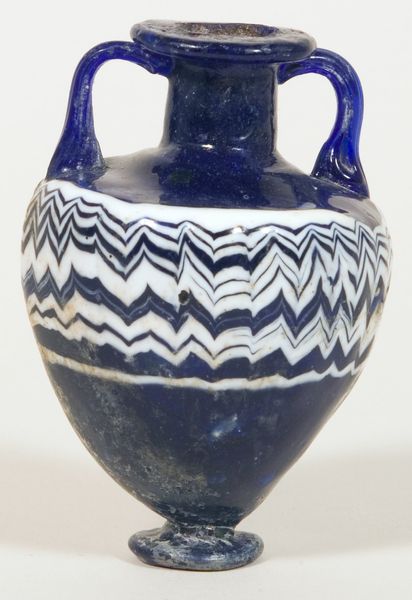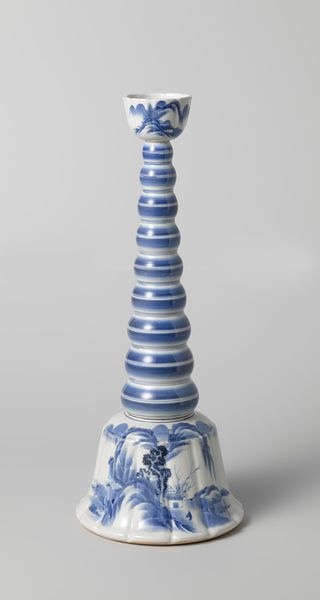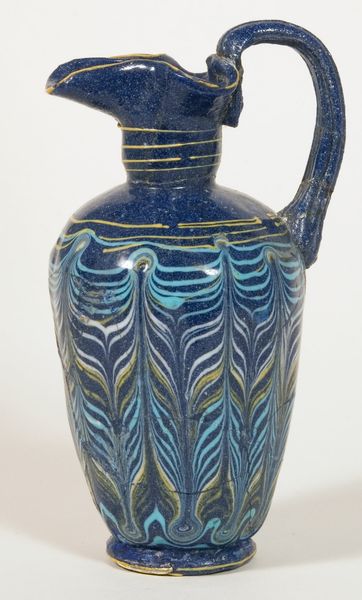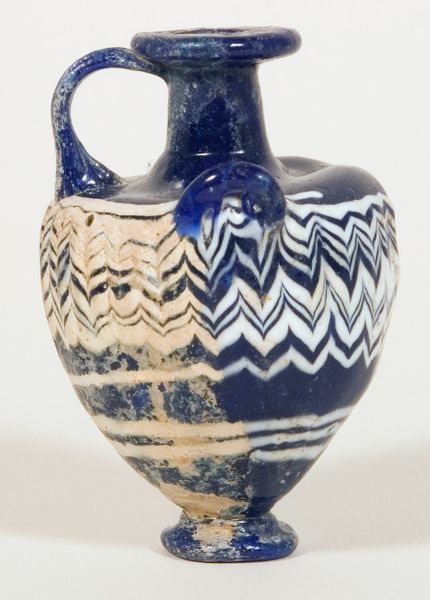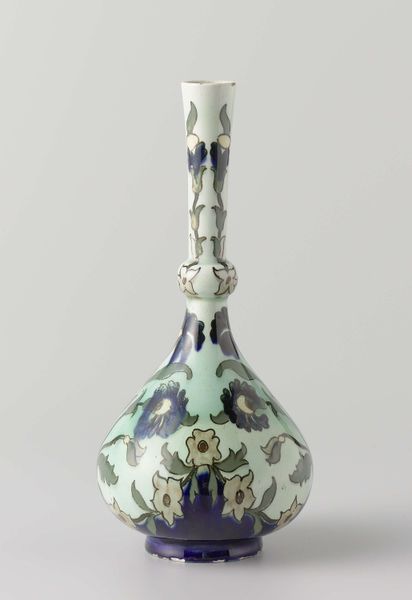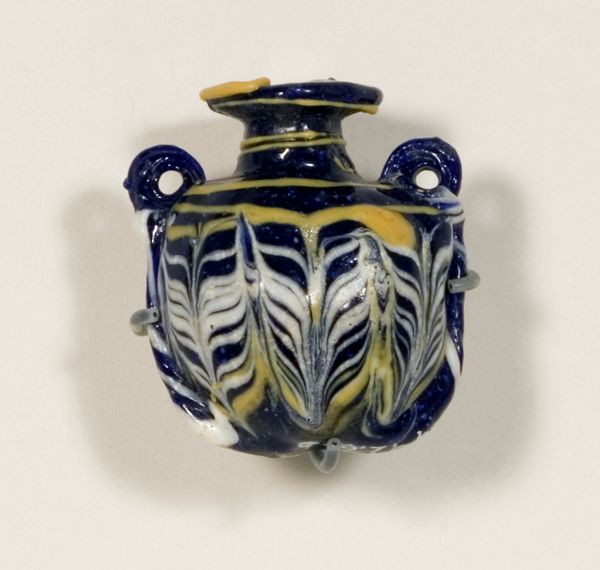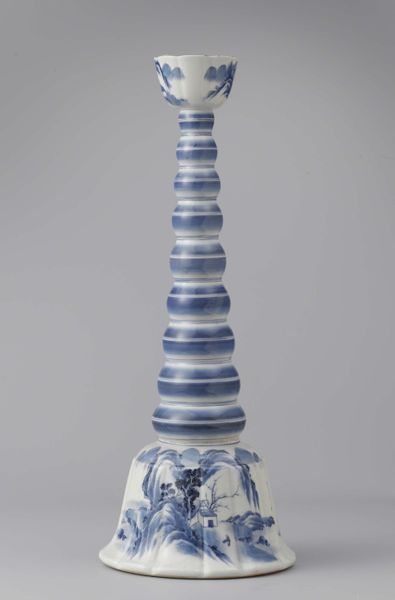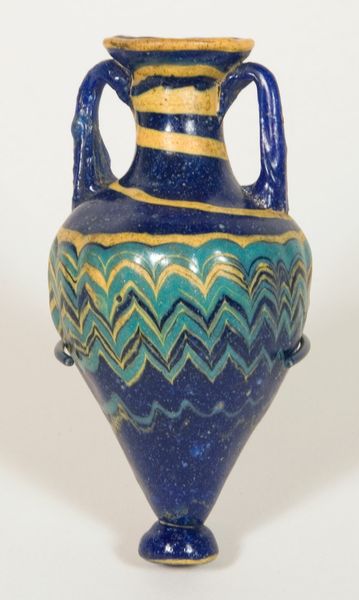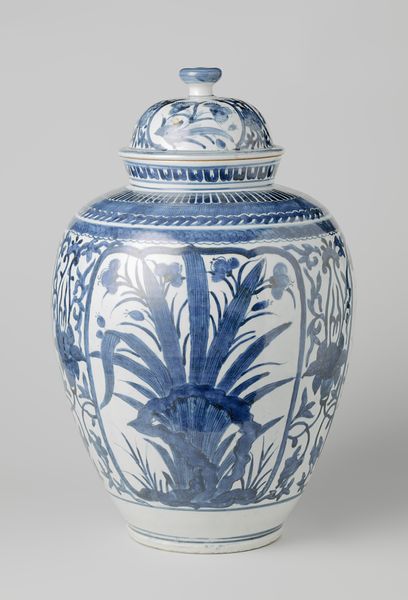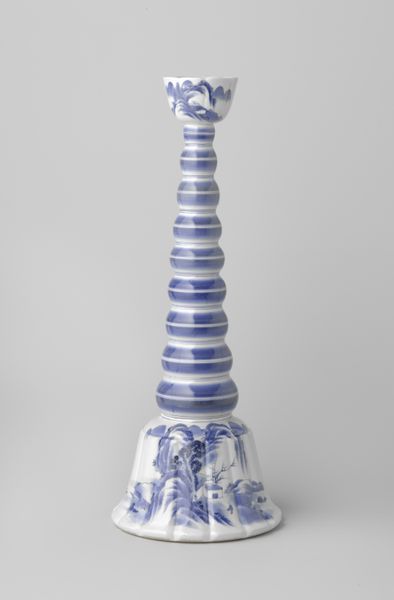
Alabastron (Container for Scented Oil) c. late to early 6th century
0:00
0:00
glass
#
glass
#
geometric
#
ancient-mediterranean
#
islamic-art
#
decorative-art
Dimensions: 12.8 × 3.3 × 3.2 cm (5 × 1 1/4 × 1 1/4 in.)
Copyright: Public Domain
This is an alabastron, a container for scented oil, made somewhere in the ancient Eastern Mediterranean. Looking at the image, we can see how its elegant, elongated form and the intricate blue and white patterns create a sense of luxury and sophistication. Scented oils were highly valued commodities, and the containers that held them were often works of art in their own right. So, who was this made for and for what occasions? During the time these vessels were produced, the Eastern Mediterranean was a melting pot of cultures and empires. The availability of materials, the presence of skilled artisans, and the demands of the market influenced the production of these items. If we consider institutional practices, objects like this were commonly used in religious rituals, funerary rites, and personal adornment. By studying archaeological records, trade routes, and ancient texts, we can piece together a more complete picture of the world in which this alabastron was created. The role of the historian is crucial in understanding how art objects like this reflect and shape the societies that produce them.
Comments
No comments
Be the first to comment and join the conversation on the ultimate creative platform.
